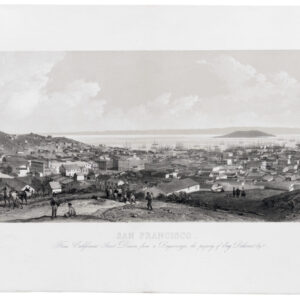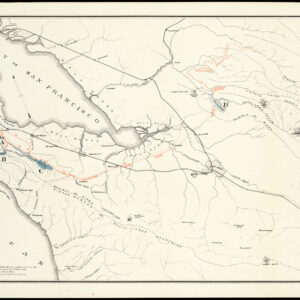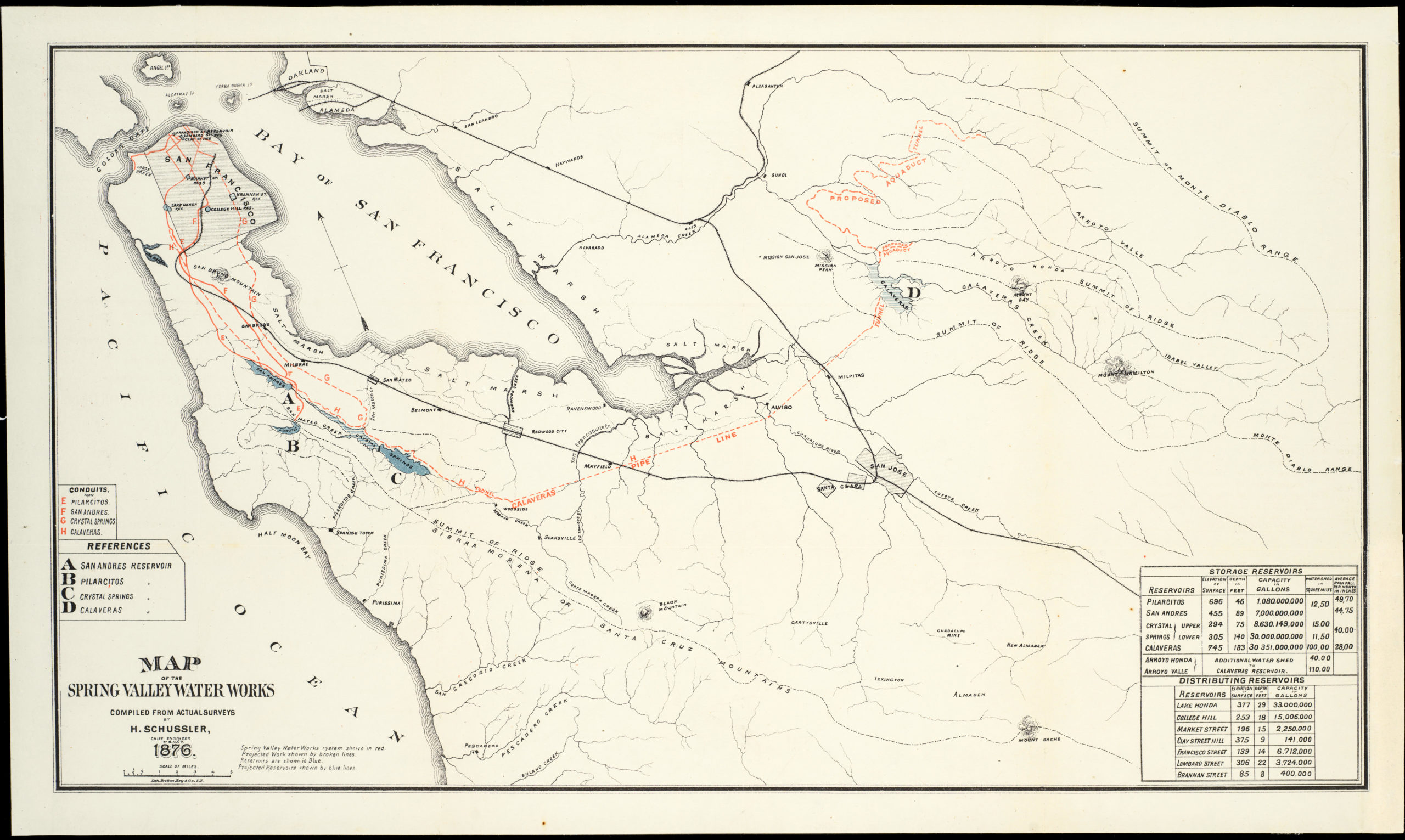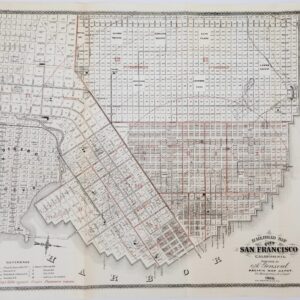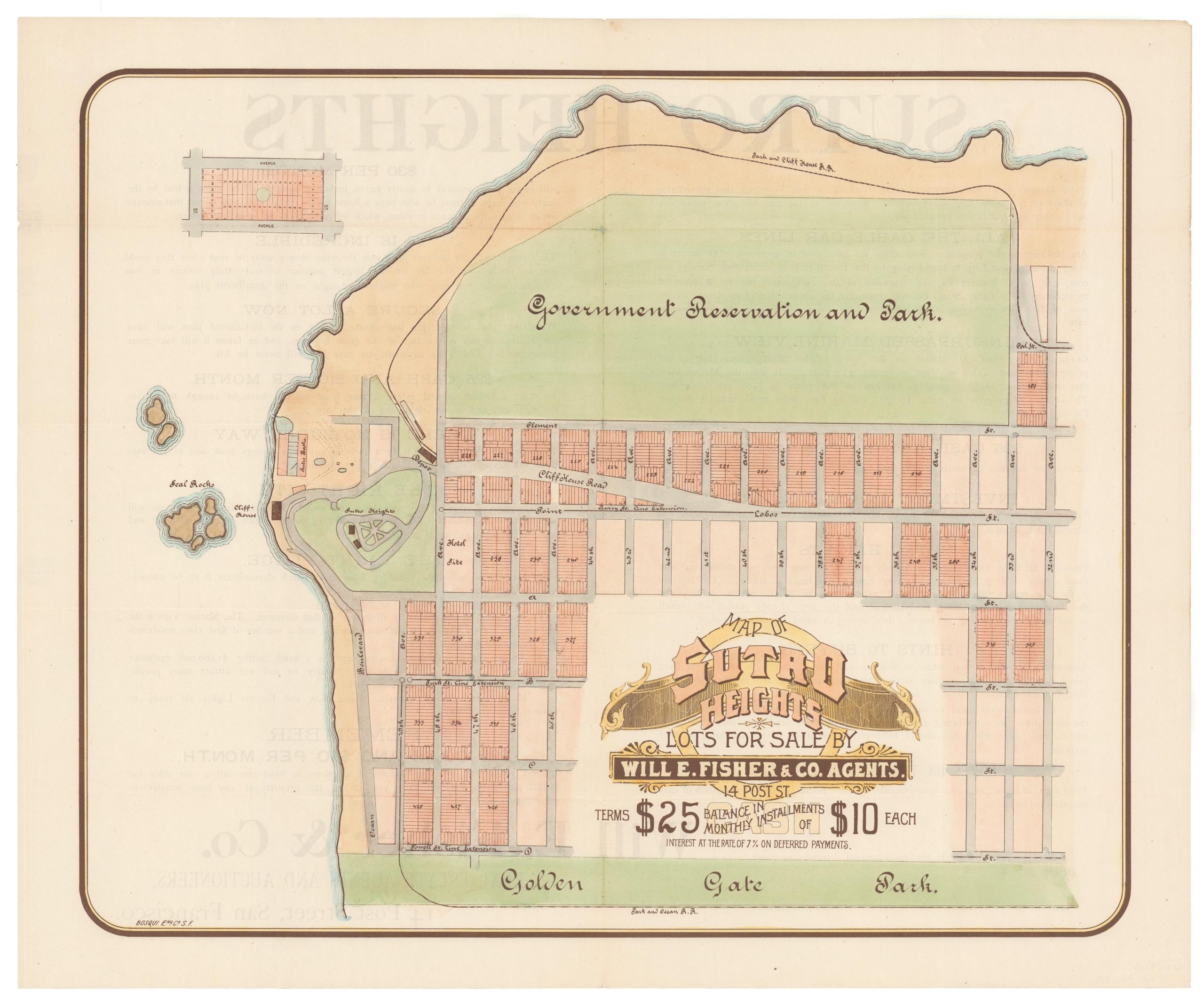The elusive ‘Elephant’ pictorial letter sheet of life in California.
Past & Present of California.
$975
1 in stock
Description
A Rare Piece of Gold Rush Ephemera.
Britton & Rey’s ‘Elephant’ sheet is a complex and evocative product that dared to combine all of San Francisco’s strange appeal into a single composition.
In two large medallions at the center, we have depictions of people disembarking ships: the perfect visual embodiment of San Francisco’s growth during the Gold Rush. On the left, we see a steamship with its tall boiler chimney and the iconic paddle box propulsion system at the rear. Despite these modern amenities, the ship still sports a large central mast. The deck and the quay are filled to the brim with people, suggesting an arriving passenger transport.
On the right, we see a more traditional sailing ship, from which crew members are being lowered into smaller craft to take them ashore. Even though it is not as crowded, the scene is still brimming with expectation and excitement. The juxtaposition is evocative: while the first scene may have been the way many people came to San Francisco during the 1850s, the image on the right is perhaps more reflective of the earliest years of the Gold Rush, when gold-fever caused sailors to abandon not just their posts, but entire vessels in the bay. Some of these were even bought locally and dragged closer to the shore, where they eventually became buildings in the waterfront’s urban sprawl.
A range of smaller vignettes surrounds the two central images. If the disembarking scenes reflected how San Francisco grew, most of the surrounding images reflect why she grew. After the discovery of gold at Sutter’s Mill in the summer of 1848, fortune seekers rushed to California to try their luck in this brand-new part of the United States. Consequently, it is not strange to find most of these scenes related directly or indirectly to the mining of gold. Among the scenes that arouse the imagination are men panning and sifting for nuggets, the construction of water-causeways in creeks to exploit the flow, and scenes of boldly venturing forth into the great unknown.
The vignettes are not only about mining, however. Some show scenes of ordinary life in California during the mid-19th century. These images were also important, as the Gold Rush needed to be sustained by all manner of people and professions – including families. It is, therefore, no coincidence that the only architecture shown in this composition is the sizeable public school in the lower left corner. This inclusion was meant to reassure families that California was a place to settle and with the necessary societal infrastructure. There are also images of dam constructions and farmers plowing their fields. In the upper right corner, we find a stagecoach, another one of those iconic scenes associated with The West.
A Gold Rush Elephant?
Perhaps the most unexpected and unusual motif is the giant elephant in the middle of the upper tier. There is, in fact, a good explanation for its presence. During the boom era, ‘seeing the elephant’ became a popular expression among both old and new San Franciscans. It derives from a musical burlesque show first staged in New York during the autumn of 1848. The show satirized the Gold Rush and mocked chasing pipe dreams by telling the story of carnies who could trick audiences into seeing non-existent elephants. By 1850, at roughly the same time as the first itinerant circus came to town (Joseph Andrew Rowe’s), the show was also staged in San Francisco. It became a hit, revealing an affinity for self-deprecating humor among the city’s inhabitants.
Census
The letter sheet measures 28 x 20.5 cm (11 x 8 inches) and was issued by the famous San Francisco printing duo: Britton & Rey. It was lithographed on a single sheet of white woven paper and published around 1855. The number 11 in the upper right corner suggests that it was part of a numbered series.
We trace only two examples in institutional holdings: Yale University (OCLC no. 1236794716 and the Huntington Library (call no. 8052:087). The key reference is Baird 193.
Cartographer(s):
Britton & Rey (1852 – 1906) was a lithographic printing firm based in San Francisco and founded by Joseph Britton and Jacques Joseph Rey in 1852. Especially during the second half of the 19th century, Britton and Rey became the leading lithography firm in San Francisco, and probably California. Among their many publications were birds-eye-views of Californian cities, depictions of the exquisite landscapes, stock certificates, and no least maps. While Rey was the primary artist, Britton worked not only as the main lithographer but was essentially also the man running the business. In addition to their own material, the firm reproduced the works of other American artists like Thomas Almond Ayres (1816 – 1858), George Holbrook Baker (1824 – 1906), Charles Christian Nahl (1818 – 1878), and Frederick August Wenderoth (1819 – 1884). Following Rey’s death in 1892 Britton passed the form on to Rey’s son, Valentine J. A. Rey, who ran it until the great earthquake and fire of 1906 destroyed most of the company’s assets.
Joseph Britton (1825 – July 18, 1901) was a lithographer and the co-founder of the prominent San Francisco lithography studio Britton and Rey. He was also a civic leader in San Francisco, serving on the Board of Supervisors and helping to draft a new city charter. In 1852, he became active in lithography and publishing, first under the name ‘Pollard and Britton,’ and then ‘Britton and Rey,’ a printing company founded with his friend and eventual brother-in-law Jacques Joseph Rey. Britton and Rey became the premier lithographic and engraving studio of the Gold Rush era, producing letter sheets, maps, and artistic prints.
Jacques Joseph Rey (1820 – 1892) was a French engraver and lithographer born in the Alsatian town of Bouxwiller. At the age of about 30, he emigrated to America, eventually settling in California. Here, he soon entered into a partnership with local entrepreneur and civic leader Joseph Britton. Three years later, Rey also married Britton’s sister, allowing his business partner and brother-in-law Britton to live in their house with them. Rey and Britton were not only an important part of the San Francisco printing and publishing scene but also owned a plumbing and gas-fitting firm. In the early years, both men would sometimes partner up with others on specific projects, but by the late 1860s, their partnership was more or less exclusive.
Condition Description
Very good.
References
Joseph A. Baird Jr. & Edwin Clyve Evans (1972). Historic Lithographs of San Francisco. Burger & Evans: San Francisco.
J. Rea (1969). Seeing the Elephant. Western Folklore 28,1: 21–26. (https://doi.org/10.2307/1499104).


